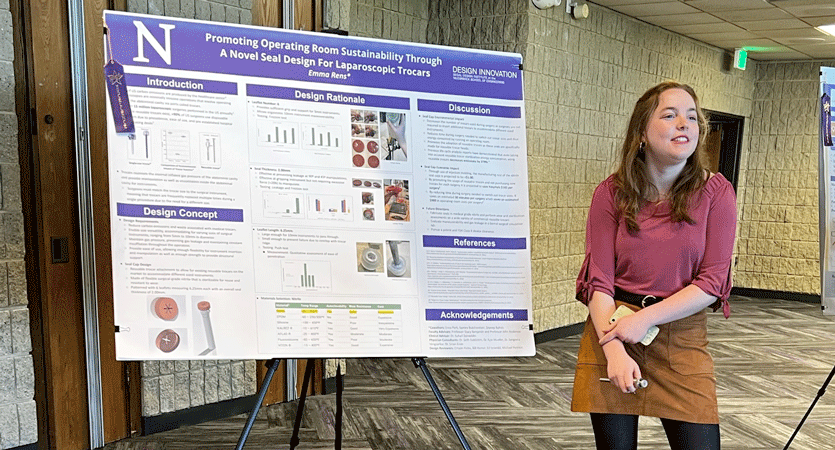Design Certificate Students Place Third for Poster Presentation at Northwestern Undergraduate Research Expo

Emma Rens (’24) and Erica Park (’23) were astonished by the amount of medical waste generated during a pediatric appendectomy. During their hospital shadowing experience, the Segal Design Certificate students observed that waste from a routine, minimally invasive surgery like an appendectomy filled three trash cans.
Motivated by their passion for applying design and engineering skills to promote medical sustainability, Rens and Park teamed up with fellow Segal Design Certificate students Zeynep Bahsis (’24) and Samira Bulchandani (’24) to develop a design concept that aims to reduce the waste produced by laparoscopic surgeries.
The team, advised by Segal faculty members Stacy Benjamin and John Anderson, worked on their design concept in DSGN 384: Interdisciplinary Product Design, a two-quarter capstone course offered by the Segal Design Institute. This month, their work earned them third place in the Natural Sciences and Engineering category for their poster presentation at the Northwestern Undergraduate Research Expo.
Their poster, titled “Promoting Operating Room Sustainability Through a Novel Seal Design for Laparoscopic Trocars,” highlights a critical issue: In the US, nearly 10 percent of carbon emissions are produced by the healthcare sector. In laparoscopic surgeries, surgeons use devices called trocars to make small incisions in the body and insert surgical instruments. Throughout surgery, trocars are often changed to accommodate different sized instruments. While reusable trocars exist, most surgeons use single-use trocars.
The students’ design concept features a reusable trocar seal cap attachment that can be sterilized. The attachment would enable existing reusable trocars on the market to accommodate instruments of different sizes. The primary goal is to reduce medical waste by enhancing the versability of trocars, and benefit surgeons by saving them time and money while preserving patient safety.
“Hopefully we can take [the design] as far as we can. Medical sustainability is a huge issue, and I’m glad it’s getting more visibility,” Rens said. “Solutions can be engineered to address this issue.”
